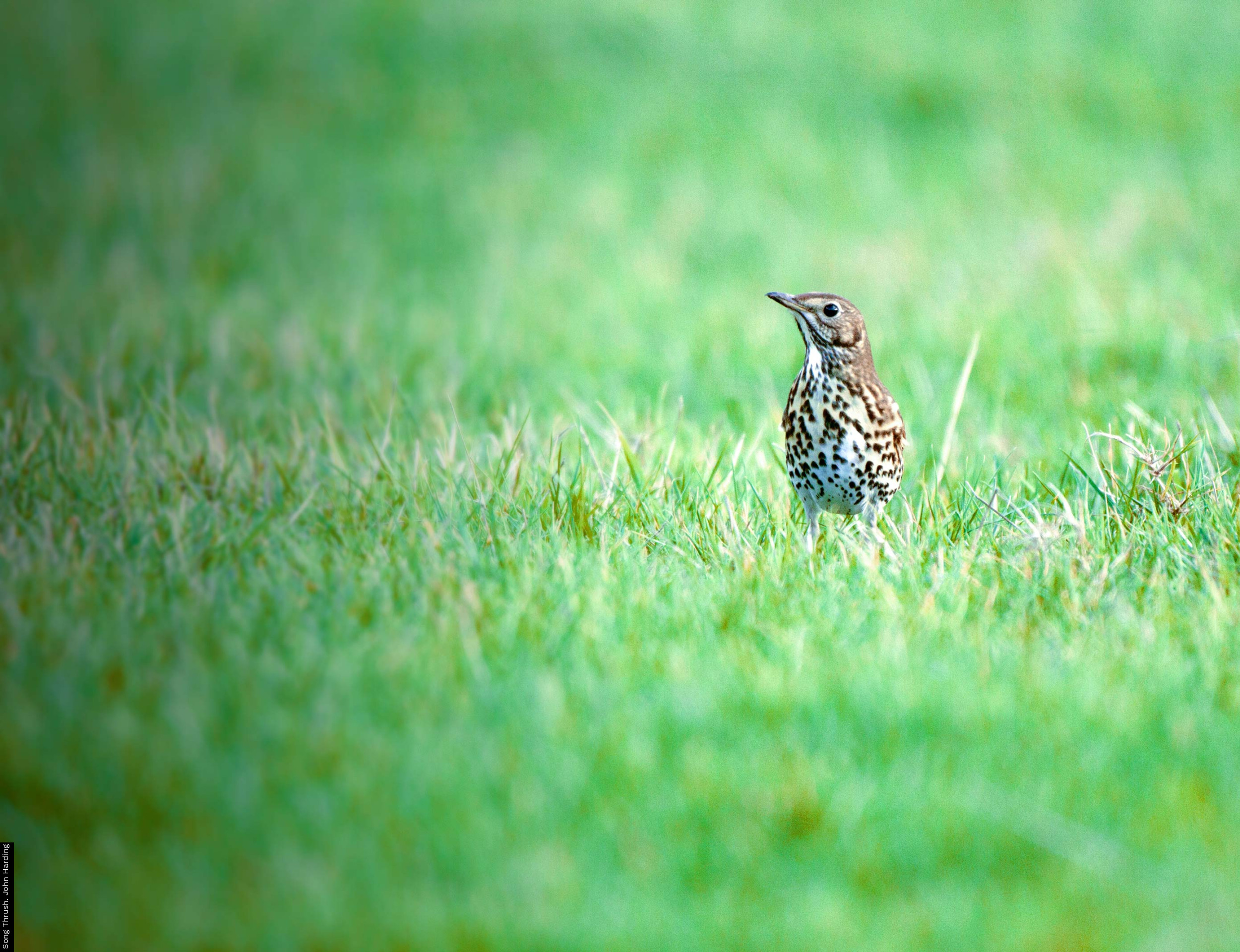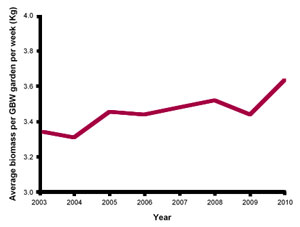Background to the survey
The total biomass of birds visiting gardens has been growing (see graph) and so in 2012 we asked householders to calculate the weight of their garden bird communities in order that we could examine how these communities varied according to region, garden type and surrounding habitat.
Why biomass and not numbers?
Although we actually collected information on the numbers of birds seen in gardens during the survey period (something that we will use for other parts of our analysis), we needed a sensible measure by which we could compare gardens with different types of birds visiting. One Woodpigeon will eat considerably more birdfood than one House Sparrow, so it makes sense to use a measure that can account for this. Biomass provides this measure.
Changes over time
Improved foods and feeders, coupled with changes in the wider countryside, mean that gardens are more important for birds than ever before. During an average week in 2003, the average garden supported 3.3 Kg – more than three bags of sugar – of bird. By 2010, this figure had risen by almost 10%, and 2012 is set to be a record-breaker.
The survey
The survey was carried our during June 2012 and observers were asked to note down the birds using their garden over the course of one hour, recording the maximum number of individuals of any given species recorded at one point in time. These observations were then entered through a web-based system, with interactive results pages reporting initial 'live' findings. We were interested in the structure of the core avian community so asked for counts of 60 specific species.







Share this page